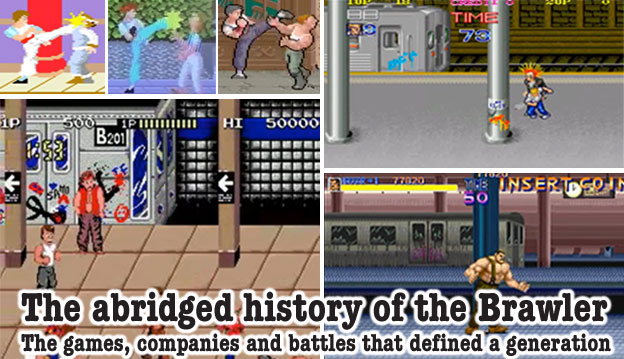
The Brawling genre, also known as the Beat-Em-Up among arcade aficionados, has been a part of gaming history for over 30 years. Players can identify the genre thanks to some trademark elements. The games traditionally consist of one or more players taking on waves of opponents using mostly punches and kicks. Players can usually pick up health and weapons along the way. At some point a boss or sub boss appears to fight the players. The game basically repeats this formula until the end, or until the player runs out of continues.
Some of the most enjoyable gaming experiences are connected to long-running titles, many of which are saturated with murder, violence, tragedy and revenge. The genre remains popular despite the (sometimes) graphic content because the titles are among the easiest to get into, play and enjoy. The mechanics of a great brawling experience are rooted in very simple gameplay elements. A joystick and two buttons are usually all that is required to begin playing, navigating and interacting with any number of virtual worlds. A player that has mastered one good brawler has probably experienced the best elements of all of them. The key to the success for most in the genre has been accessibility. The fantastic premises, over-the-top characters and simple control schemes could make players feel like they were literally taking on the world. The repetitive nature of the combat system and sheer number of opponents made gamers believe that they were advancing through a rich narrative even though the gameplay remained the same from beginning to end. These lessons would be applied to other genres and helped shape the gaming industry. However before we talk about what became of the brawler we have to go back to the beginning. Where did the brawler come from?
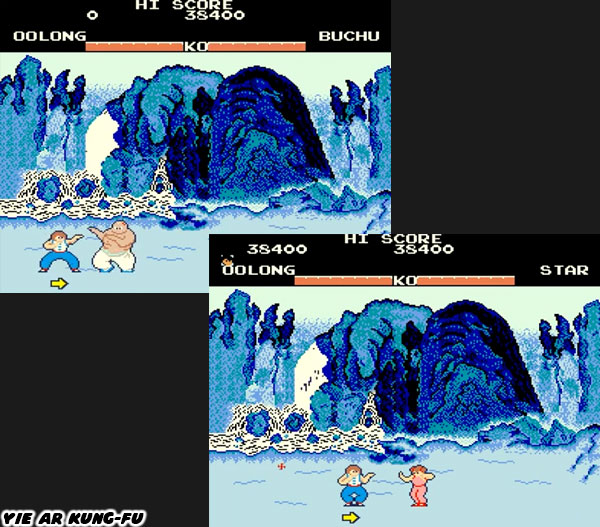
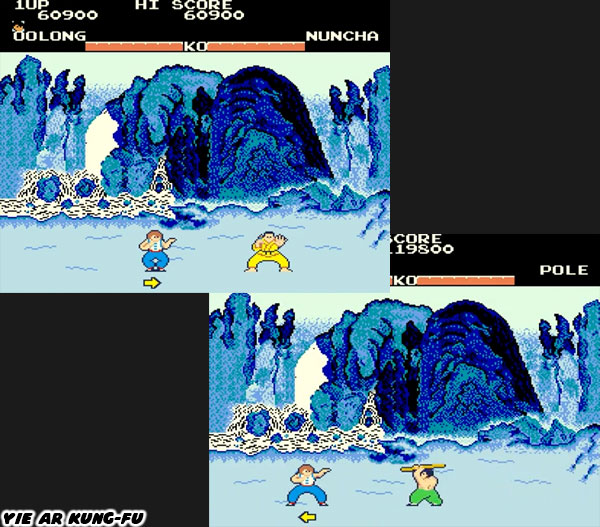
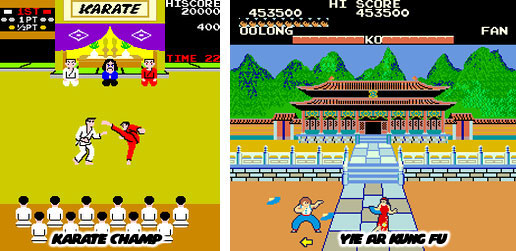
The game was unlike anything that arcade visitors had ever seen before. It began with a scene of a girl getting punched in the gut and kidnapped by a gang of pseudo-futuristic thugs. This intro was shocking to most gamers. It gave young gamers a dose of sex on top of violence as the pixelated panties of the damsel were clearly visible as she was thrown over the shoulders of a gang member. Right after the kidnapping the main characters Billy and Jimmy Lee appeared from a garage to chase down the attackers.
The rest of the game was a textbook example of brawling design. Rival characters fought with certain techniques, the larger characters had greater range and could often do more damage to players so they had to be kept at bay. Smaller characters could be rushed by players. Players could even battle female gang members. It was the first equal opportunity brawler! The control was simple, there were only three buttons; jump, punch and kick. Players could move in any direction on the screen but their character would always face either right or left. The same thing applied for opponents. This allowed the player to focus on attacks on a 2D plane and not worry about directional attacks from below or above the character. The fighting system was quite robust for only using a few buttons. A player could switch between punches and kicks and find which combination of attacks worked best to drop different sized opponents. Players could stun rivals with a punch and then throw an elbow at an opponent sneaking up behind them, then return to the original attacker with a kick. Players could even perform grapple attacks by pressing toward opponents and pressing the right action button. The player could grab the opponent by the hair and smash a knee into their face or perform a judo throw and toss the opponents over their shoulder. Players could also interact with the environment, such as throwing objects at opponents and even take weapons from rivals to use against them.
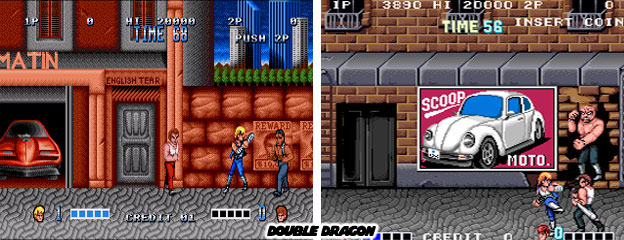
Visually the game was vey stylized. Characters didn't quite have Eastern animé or Western comic book proportions but instead something in the middle. The muscles were exaggerated on most of the characters and especially on the rival characters to make them appear more imposing. Each character was given a solid color choice to make them easy to identify on screen especially when a half dozen or more characters were engaged in battle. The world of Double Dragon was urban and just a hint futuristic with the choice of gang outfits and vehicles on the stages. The stages and environments shifted from the streets to the countryside and even the underground of the dystopian world. Players could take advantage of the level designs and throw opponents into rivers or down spike pits. The changing scenery and interactive environments would become a staple of all brawling games. Players felt as if they were on the ultimate quest for revenge as they battled nonstop through a city. For young gamers, especially boys, the experience could be exhilarating.
Gamers assumed the role of the ultimate tough guys. They fought off wave after wave of gang members coming at them from every direction. Using everything they could to fend off attackers and fighting just as dirty as their opponents. Double Dragon allowed players to turn into digital representations of martial arts movie stars and live out the fantasy in one extended battle sequence.
Unlike the legendary non-stop 4 minute fight sequence featuring Tony Jaa in the film Tom Young Goong aka the Protector, many brawling games were anywhere from a half hour to an hour of nonstop fighting. This level of intense engagement (and monetary investment) gave players that beat the game a strong emotional attachment to the characters and title itself. Yet most of the seasoned arcade players would be surprised to learn that Double Dragon was not the original brawling game, at least not by the definition we’ve explored here.
This series will go over some of the most important, some of the worst and some of the most unique brawling games released over the past three decades. The series is in no way meant to be comprehensive or even cover all the sub-genres associated with the brawler. Additionally this series deals mostly with the original titles and will rarely bring up sequels. The blogs will go chronologically through the years, so if I fail to bring up a title please be patient. Chances are I'll mention a few fan-favorite games through the course of the series. Next time I shall talk about the brawling game that predated Double Dragon and got a generation started on beat-em-ups. I hope to see you back for that. As always if you enjoyed this blog and would like to sponsor me please visit my Patreon page and consider donating each month, even as little as $1 would help make better blogs and even podcasts!

Protector click had me chuckling especially the guy who ran out of stuff to throw. Double Dragon that was a plus for the SMS version of the game since it had 2 player co-op.
ReplyDelete